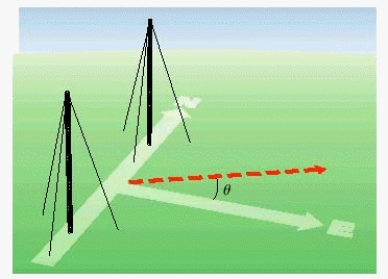Radio stations often have more than one broadcasting tower because federal guidelines do not usually permit a radio station to broadcast its signal in all directions with equal power. Since radio waves can travel over long distances, it is important to control their directional patterns so that radio stations do not interfere with one another. Suppose that a radio station has two broadcasting towers located along a north-south line, as shown in the figure. If the radio station is broadcasting at a wavelength  and the distance between the two radio towers is equal to
and the distance between the two radio towers is equal to  , then the intensity I of the signal in the direction
, then the intensity I of the signal in the direction  is given by
is given by  where I o is the maximum intensity.
where I o is the maximum intensity.  Approximate I in terms of I o for
Approximate I in terms of I o for  .
.
A) 0.055I o
B) I o
C) 0.033I o
D) 0.066I o
E) 0.044I o
Correct Answer:
Verified
Q24: Approximate the acute angle Q25: Let P ( t ) be the Q26: An airplane flying at a speed of Q27: Points on the terminal sides of angles Q28: Verify the identity by transforming the left-hand Q30: Refer to the graph of y = Q31: A ship leaves port at 4:00 P.M. Q32: If a circular arc of the length Q33: The amount of sunshine illuminating a wall Q34: Express the angle as a decimal, to![]()
Unlock this Answer For Free Now!
View this answer and more for free by performing one of the following actions

Scan the QR code to install the App and get 2 free unlocks

Unlock quizzes for free by uploading documents